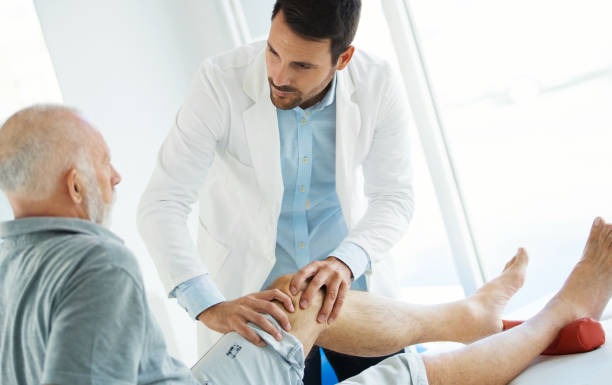Osteoarthritis: causes, diagnosis and possible treatments
[ad_1]

Photo credit: istock photos
According to NHS, Osteoarthritis is a condition that causes joints to become painful and stiff. It’s the most common type of arthritis in the UK.
Causes of osteoarthritis
As part of normal life, your joints are exposed to a constant low level of damage. In most cases, your body repairs the damage itself and you do not experience any symptoms.
But in osteoarthritis, the protective cartilage on the ends of your bones breaks down, causing pain, swelling and problems moving the joint. Bony growths can develop, and the area can become red and swollen.
The exact cause is not known, but several things are thought to increase your risk of developing osteoarthritis, including:
1. joint injury: overusing your joint when it has not had enough time to heal after an injury or operation
2. other conditions (secondary arthritis): osteoarthritis can happen in joints severely damaged by a previous or existing condition, such as rheumatoid arthritis or gout
3. age: your risk of developing the condition increases as you get older
4. family history: osteoarthritis may run in families, although studies have not identified a single gene responsible
5. obesity: being obese puts excess strain on your joints, particularly those that bear most of your weight, such as your knees and hips
6. being a woman: osteoarthritis is more common in women than men.
Diagnosing osteoarthritis
To help determine whether you have osteoarthritis, a doctor will first ask you about your symptoms and examine your joints.
A doctor may suspect osteoarthritis if:
1. you’re aged 45 or older
2. you have joint pain that gets worse the more you use your joints
3. the stiffness in your joints is not there in the mornings, or lasts less than 30 minutes.
If your symptoms are slightly different, this may indicate another joint condition. For example, prolonged joint stiffness in the morning can be a sign of rheumatoid arthritis.
Further tests, such as X-rays or blood tests are not usually necessary, but may be used to rule out other possible causes, such as rheumatoid arthritis or a fractured bone.
Treating osteoarthritis
Osteoarthritis is a long-term condition and cannot be cured, but it doesn’t necessarily get any worse over time and it can sometimes gradually improve. A number of treatments are also available to reduce the symptoms.
Mild symptoms can sometimes be managed with simple measures, including:
1. regular exercise
2. losing weight if you’re overweight
3. wearing suitable footwear
4. using special devices to reduce the strain on your joints during your everyday activities.
If your symptoms are more severe, you may need additional treatments such as painkillers and a structured exercise plan with a physiotherapist.
In a small number of cases, where these treatments haven’t helped or the damage to the joints is particularly severe, surgery may be done to repair, strengthen or replace a damaged joint.
Content created and supplied by: Kwajaffa (via Opera
News )
[ad_2]

